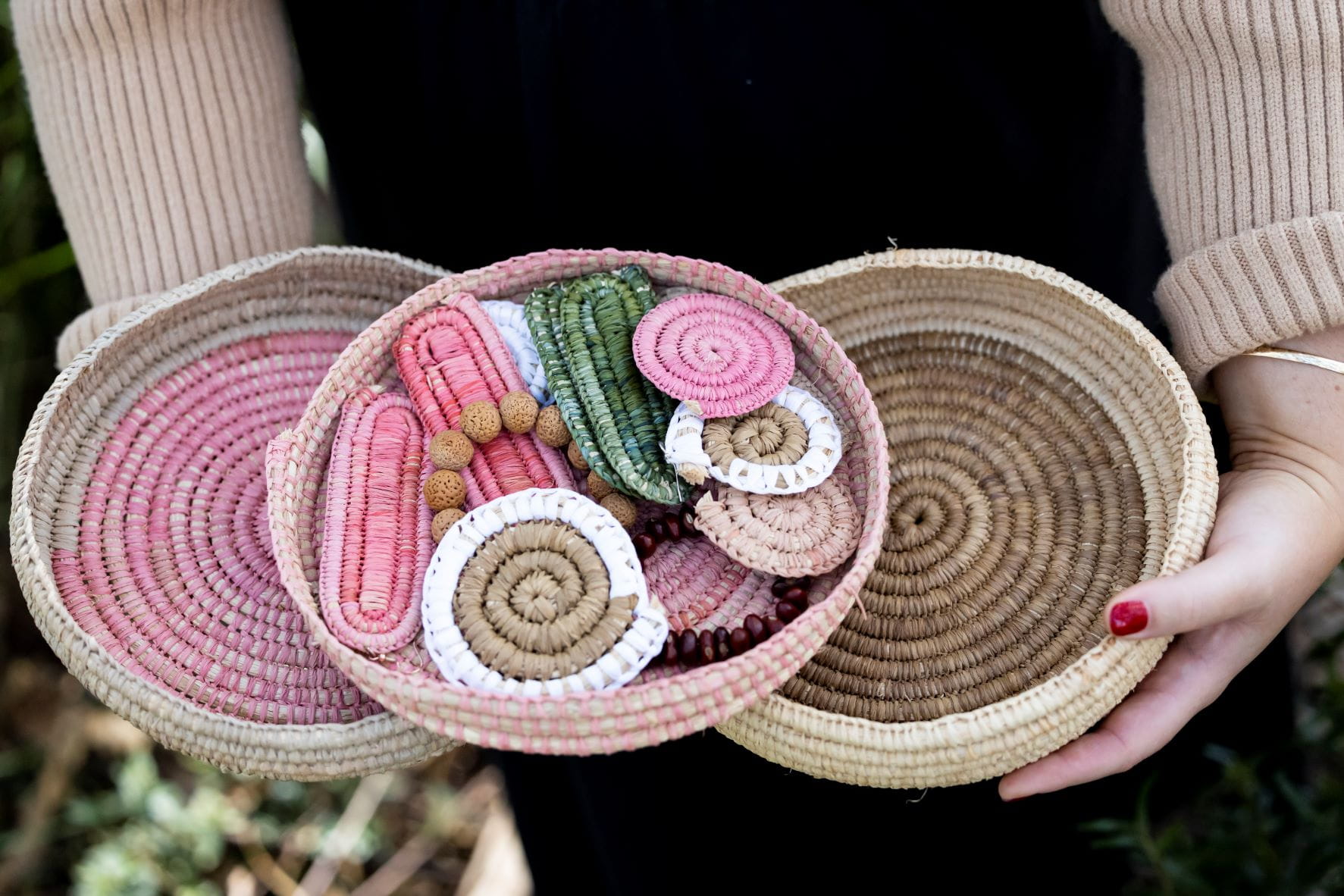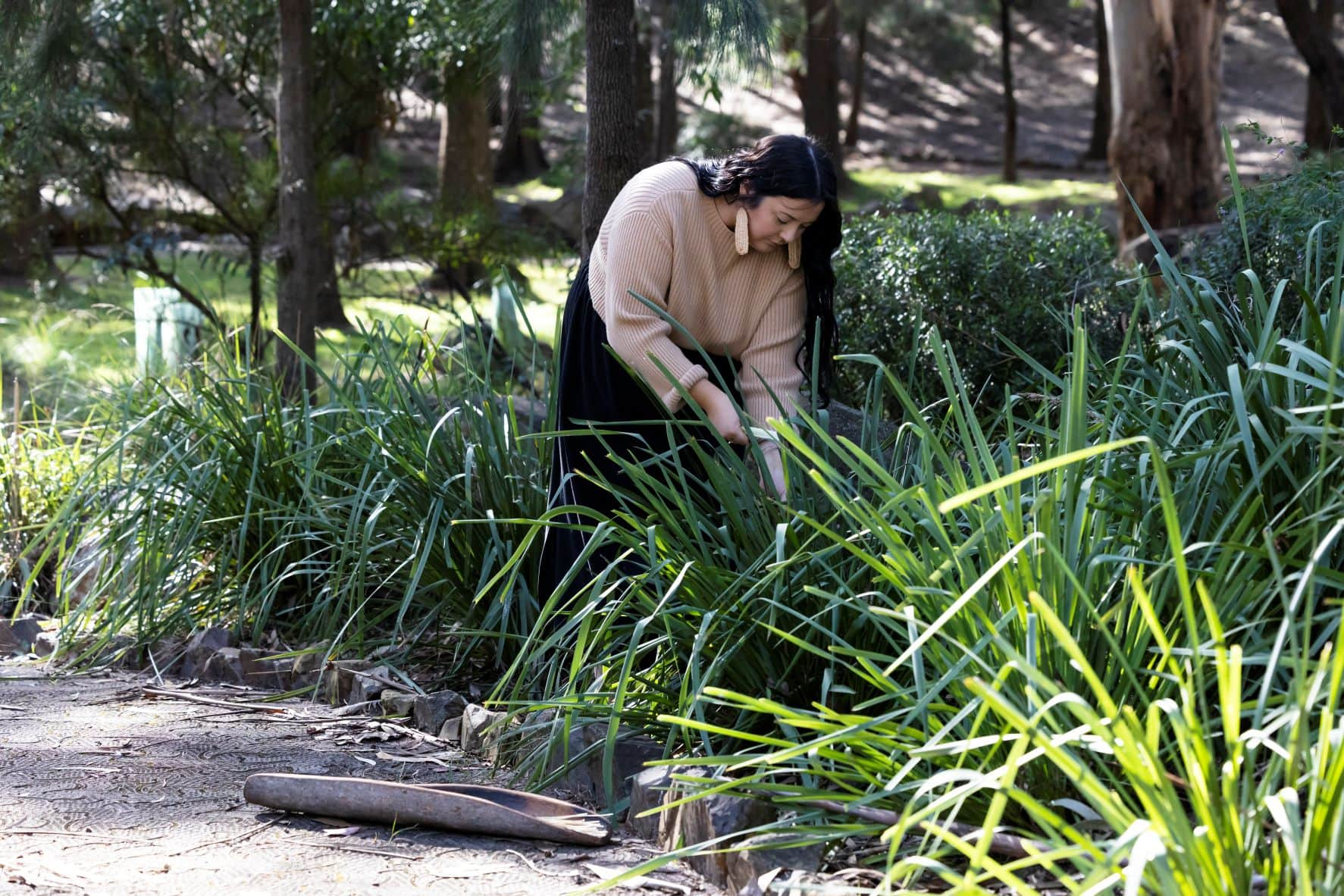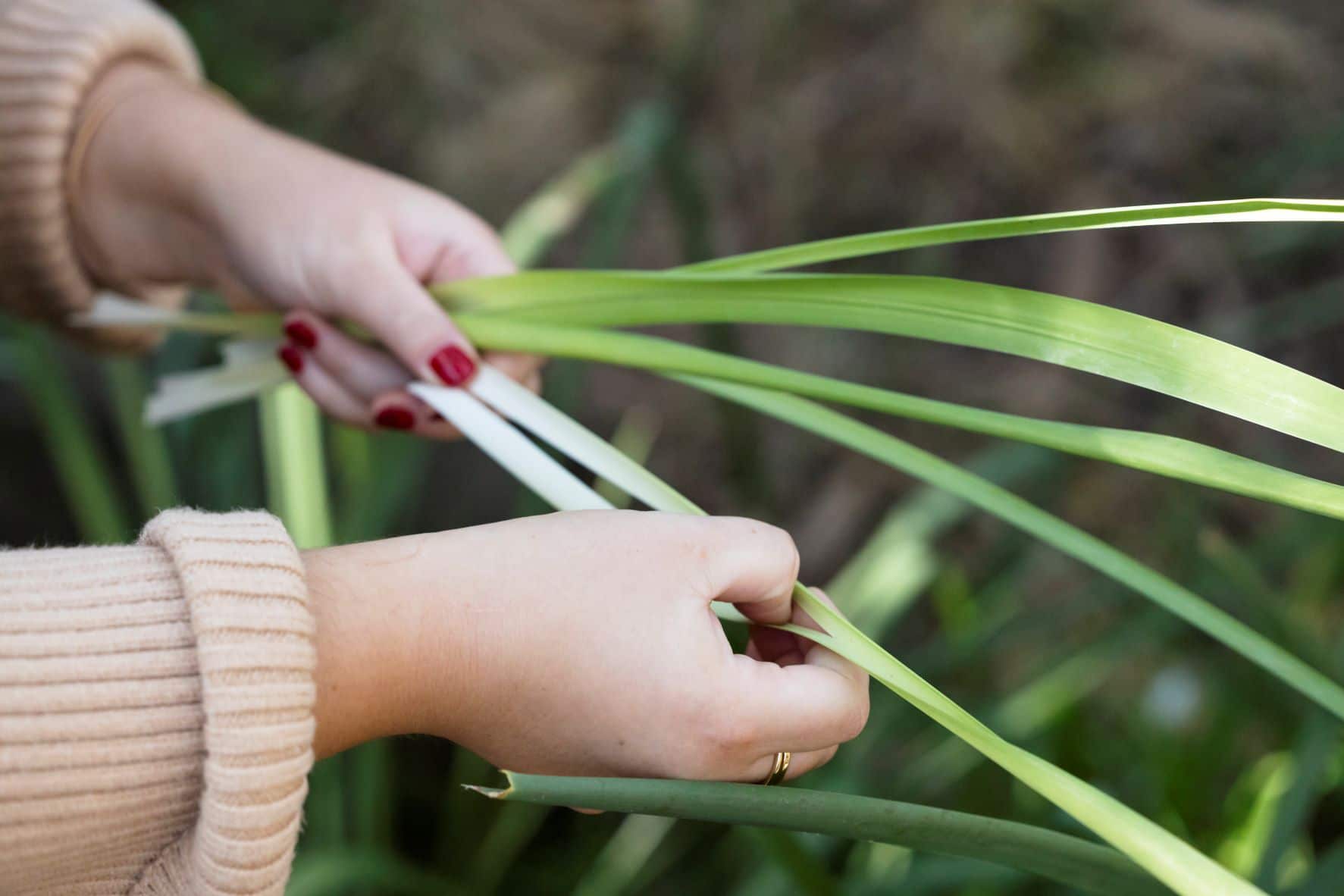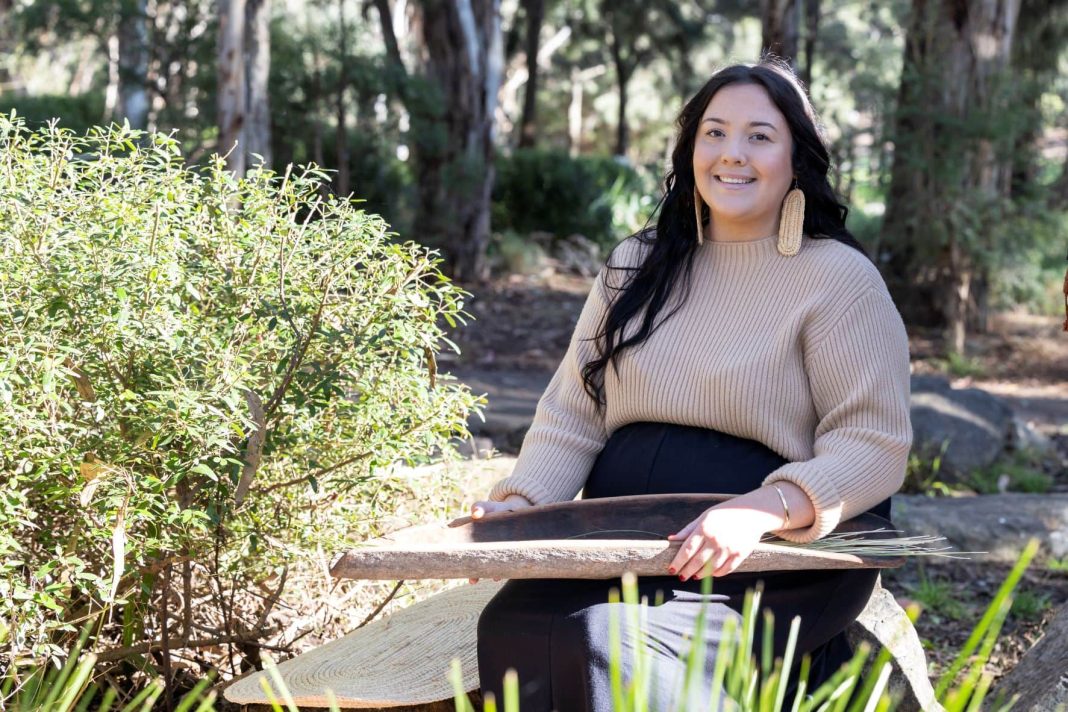Clutching her kangaroo bone needle, Lomandra reeds and Coolamon, proud Wiradjuri woman, Jessika Spencer, is keeping traditional weaving knowledge alive as she follows in her ancestors’ footsteps.
Walking together on country, Jessika leads us to a quiet section at Lake Ginninderra, where native plants grow in abundance and kookaburras laugh in the trees.
Her knowledge of country is evident as she eloquently shares her understanding of the surrounding plants, trees, and birds, as we sit down to have a yarn.
Jessika begins her story at the Sandhills of Narrandera, NSW where she’s from, and where the Murrumbidgee River flows with a long and, at times, painful history.
She explains that the Aboriginal people of the area, including her own ancestors, were pushed out to the Sandhills during white settlement.
“My family still lives there [the Sandhills] and it’s where I was first taught to weave. I was raised by my Nan, so she really instilled in me a deep love and respect for culture,” Jessika says.
“Throughout my life a lot of talented First Nations women have taught me different ways of weaving, and I’m really grateful for that passing of cultural knowledge. There’s one Worimi sister in particular that really gave me so much guidance on weaving. I don’t take it lightly; It’s something that is at my core, and I always make sure to acknowledge and pay my respect to.
“I worked for many years alongside staunch Aboriginal Rangers, and they taught me so much about culture and country. They definitely helped grow and strengthen my knowledge. They’re family now.”
Reflecting on weaving, Jessika recalls the important cultural protocols behind it.
“For a lot of Wiradjuri women, weaving is women’s business, so I was taught to weave in safe cultural spaces. Particularly on our women’s sites,” says Jessika.

Biyanha, a Wiradjuri phrase meaning ‘habitual’, was a name warmly gifted to Jessika for her weaving project by her cherished grandmother and respected Wiradjuri Elder.
Passionately aiming to close a cultural knowledge gap across Ngunnawal and Ngambri country through Biyanha, Jessika runs weaving workshops, and recently was a YWCA Canberra Great Ydeas Small Grant recipient.
Living on Ngunnawal and Ngambri country for around two decades, Jessika says she’s always been a part of the Aboriginal community here.
“We’re neighbouring clans,” smiles Jessika. “There’s so many of our Indigenous women who want to weave, but there aren’t many opportunities.
“I thought, wouldn’t it be amazing if we had an Aboriginal facilitator who really had that community goal and passion to go across country and share that cultural knowledge and show support to Elders and Traditional Owners.
“Getting the YWCA Grant means a lot. It means I’m able to really help the local Indigenous community, which is what I’ve always wanted to do.”
Most likely found barefoot in the bush, Jessika generally collects native Lomandra and Cumbungi reeds, splits them with her fingers, and dries them out in her Coolamon.
Weaving intricate baskets with cultural resilience tied between every reed, Jessika uses an array of vegetables, fruits, and tree leaves to create beautiful colours and, more importantly, to continue preserving culture. Sustainability and eco dyeing are at the forefront of her creative work.
Utilising emu feathers in her work, weaving them amongst the reeds, also feels special to Jessika, as they are “closely connected to women’s business”.
“I think my ancestors would be really proud… definitely. I’m doing what I am, because they weren’t able to.”
-Jessika Spencer
“My Nan says she’s proud of me weaving. She’s actually 90 and she’s still kicking, and for a blackfulla, that’s rare! She constantly reiterates how proud she is of me,” says Jessika, her smile revealing a humble sense of pride.
“Unfortunately, she now has arthritis, so she can’t weave herself, so I can see that pride as she’s watching me go on and weave and teach other people… the next generation.
“Nan wasn’t allowed to practise culture and weave growing up on the mission, particularly in public spaces. It could only safely be done on the Sandhills, near the river, where we still weave today.
“Weaving isn’t just a fibre craft – it’s also got to do with land management and preserving culture, and this project embodies all of that. It’s really about sharing that knowledge because if we don’t… what happens to it?”
Jessika says learning to weave is a “lifelong journey”.
“Weaving is everything to me. It’s absolutely everything. It’s very calming and has helped me heal; it helps me to ground myself and remember who I am,” she says.
“I’m constantly weaving. This isn’t for show and tell, this is so genuine and from the heart for me.”
When asked what the term ‘preserving culture’ means to her, Jessika ponders for a moment.
“To me, preserving culture means really keeping it strong, keeping ties with local Elders, Traditional Owners, and other community members who have come from different mobs,” says Jessika, her smile faltering slightly.
“When I think of preserving culture, I think about… what are my kids going to see? What are my grandchildren going to see? For me, it’s really just about maintaining that cultural knowledge for past generations and future ones.”
Ensuring the continuation of her culture is intrinsic to Jessika’s being, as she keeps the knowledge of Wiradjuri weaving alive and well.


Canberra Daily would love to hear from you about a story idea in the Canberra and surrounding region. Click here to submit a news tip.



